Apple Announces The Apple Silicon M1: Ditching x86 - What to Expect, Based on A14
by Andrei Frumusanu on November 10, 2020 3:00 PM EST- Posted in
- Apple
- Apple A14
- Apple Silicon
- Apple M1
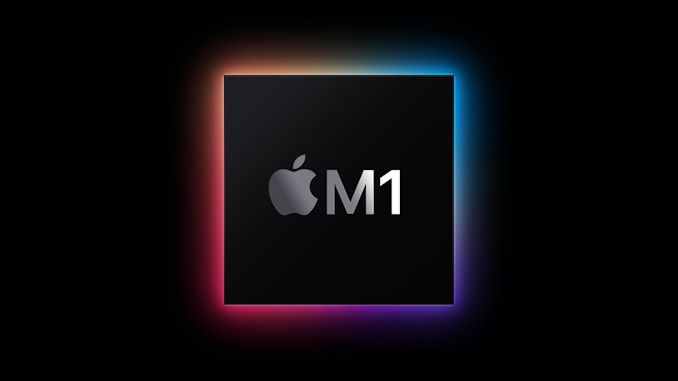
Today, Apple has unveiled their brand-new MacBook line-up. This isn’t an ordinary release – if anything, the move that Apple is making today is something that hasn’t happened in 15 years: The start of a CPU architecture transition across their whole consumer Mac line-up.
Thanks to the company’s vertical integration across hardware and software, this is a monumental change that nobody but Apple can so swiftly usher in. The last time Apple ventured into such an undertaking in 2006, the company had ditched IBM’s PowerPC ISA and processors in favor of Intel x86 designs. Today, Intel is being ditched in favor of the company’s own in-house processors and CPU microarchitectures, built upon the Arm ISA.
The new processor is called the Apple M1, the company’s first SoC designed with Macs in mind. With four large performance cores, four efficiency cores, and an 8-GPU core GPU, it features 16 billion transistors on a 5nm process node. Apple’s is starting a new SoC naming scheme for this new family of processors, but at least on paper it looks a lot like an A14X.
Today’s event contained a ton of new official announcements, but also was lacking (in typical Apple fashion) in detail. Today, we’re going to be dissecting the new Apple M1 news, as well as doing a microarchitectural deep dive based on the already-released Apple A14 SoC.
The Apple M1 SoC: An A14X for Macs
The new Apple M1 is really the start of a new major journey for Apple. During Apple’s presentation the company didn’t really divulge much in the way of details for the design, however there was one slide that told us a lot about the chip’s packaging and architecture:
This packaging style with DRAM embedded within the organic packaging isn't new for Apple; they've been using it since the A12. However it's something that's only sparingly used. When it comes to higher-end chips, Apple likes to use this kind of packaging instead of your usual smartphone POP (package on package) because these chips are designed with higher TDPs in mind. So keeping the DRAM off to the side of the compute die rather than on top of it helps to ensure that these chips can still be efficiently cooled.
What this also means is that we’re almost certainly looking at a 128-bit DRAM bus on the new chip, much like that of previous generation A-X chips.
On the very same slide, Apple also seems to have used an actual die shot of the new M1 chip. It perfectly matches Apple’s described characteristics of the chip, and it looks looks like a real photograph of the die. Cue what's probably the quickest die annotation I’ve ever made:
We can see the M1’s four Firestorm high-performance CPU cores on the left side. Notice the large amount of cache – the 12MB cache was one of the surprise reveals of the event, as the A14 still only featured 8MB of L2 cache. The new cache here looks to be portioned into 3 larger blocks, which makes sense given Apple’s transition from 8MB to 12MB for this new configuration, it is after all now being used by 4 cores instead of 2.
Meanwhile the 4 Icestorm efficiency cores are found near the center of the SoC, above which we find the SoC’s system level cache, which is shared across all IP blocks.
Finally, the 8-core GPU takes up a significant amount of die space and is found in the upper part of this die shot.
What’s most interesting about the M1 here is how it compares to other CPU designs by Intel and AMD. All the aforementioned blocks still only cover up part of the whole die, with a significant amount of auxiliary IP. Apple made mention that the M1 is a true SoC, including the functionality of what previously was several discrete chips inside of Mac laptops, such as I/O controllers and Apple's SSD and security controllers.
The new CPU core is what Apple claims to be the world’s fastest. This is going to be a centre-point of today’s article as we dive deeper into the microarchitecture of the Firestorm cores, as well look at the performance figures of the very similar Apple A14 SoC.
With its additional cache, we expect the Firestorm cores used in the M1 to be even faster than what we’re going to be dissecting today with the A14, so Apple’s claim of having the fastest CPU core in the world seems extremely plausible.
The whole SoC features a massive 16 billion transistors, which is 35% more than the A14 inside of the newest iPhones. If Apple was able to keep the transistor density between the two chips similar, we should expect a die size of around 120mm². This would be considerably smaller than past generation of Intel chips inside of Apple's MacBooks.
Road To Arm: Second Verse, Same As The First
Section by Ryan Smith
The fact that Apple can even pull off a major architectural transition so seamlessly is a small miracle, and one that Apple has quite a bit of experience in accomplishing. After all, this is not Apple’s first-time switching CPU architectures for their Mac computers.
The long-time PowerPC company came to a crossroads around the middle of the 2000s when the Apple-IBM-Motorola (AIM) alliance, responsible for PowerPC development, increasingly struggled with further chip development. IBM’s PowerPC 970 (G5) chip put up respectable performance numbers in desktops, but its power consumption was significant. This left the chip non-viable for use in the growing laptop segment, where Apple was still using Motorola’s PowerPC 7400 series (G4) chips, which did have better power consumption, but not the performance needed to rival what Intel would eventually achieve with its Core series of processors.
And thus, Apple played a card that they held in reserve: Project Marklar. Leveraging the flexibility of the Mac OS X and its underlying Darwin kernel, which like other Unixes is designed to be portable, Apple had been maintaining an x86 version of Mac OS X. Though largely considered to initially have been an exercise in good coding practices – making sure Apple was writing OS code that wasn’t unnecessarily bound to PowerPC and its big-endian memory model – Marklar became Apple’s exit strategy from a stagnating PowerPC ecosystem. The company would switch to x86 processors – specifically, Intel’s x86 processors – upending its software ecosystem, but also opening the door to much better performance and new customer opportunities.
The switch to x86 was by all metrics a big win for Apple. Intel’s processors delivered better performance-per-watt than the PowerPC processors that Apple left behind, and especially once Intel launched the Core 2 (Conroe) series of processors in late 2006, Intel firmly established itself as the dominant force for PC processors. This ultimately setup Apple’s trajectory over the coming years, allowing them to become a laptop-focused company with proto-ultrabooks (MacBook Air) and their incredibly popular MacBook Pros. Similarly, x86 brought with it Windows compatibility, introducing the ability to directly boot Windows, or alternatively run it in a very low overhead virtual machine.
The cost of this transition, however, came on the software side of matters. Developers would need to start using Apple’s newest toolchains to produce universal binaries that could work on PPC and x86 Macs – and not all of Apple’s previous APIs would make the jump to x86. Developers of course made the jump, but it was a transition without a true precedent.
Bridging the gap, at least for a bit, was Rosetta, Apple’s PowerPC translation layer for x86. Rosetta would allow most PPC Mac OS X applications to run on the x86 Macs, and though performance was a bit hit-and-miss (PPC on x86 isn’t the easiest thing), the higher performance of the Intel CPUs helped to carry things for most non-intensive applications. Ultimately Rosetta was a band-aid for Apple, and one Apple ripped off relatively quickly; Apple already dropped Rosetta by the time of Mac OS X 10.7 (Lion) in 2011. So even with Rosetta, Apple made it clear to developers that they expected them to update their applications for x86 if they wanted to keeping selling them and to keep users happy.
Ultimately, the PowerPC to x86 transitions set the tone for the modern, agile Apple. Since then, Apple has created a whole development philosophy around going fast and changing things as they see fit, with only limited regard to backwards compatibility. This has given users and developers few options but to enjoy the ride and keep up with Apple’s development trends. But it has also given Apple the ability to introduce new technologies early, and if necessary, break old applications so that new features aren’t held back by backwards compatibility woes.
All of this has happened before, and it will all happen again starting next week, when Apple launches their first Apple M1-based Macs. Universal binaries are back, Rosetta is back, and Apple’s push to developers to get their applications up and running on Arm is in full force. The PPC to x86 transition created the template for Apple for an ISA change, and following that successful transition, they are going to do it all over again over the next few years as Apple becomes their own chip supplier.
A Microarchitectural Deep Dive & Benchmarks
In the following page we’ll be investigating the A14’s Firestorm cores which will be used in the M1 as well, and also do some extensive benchmarking on the iPhone chip, setting the stage as the minimum of what to expect from the M1:


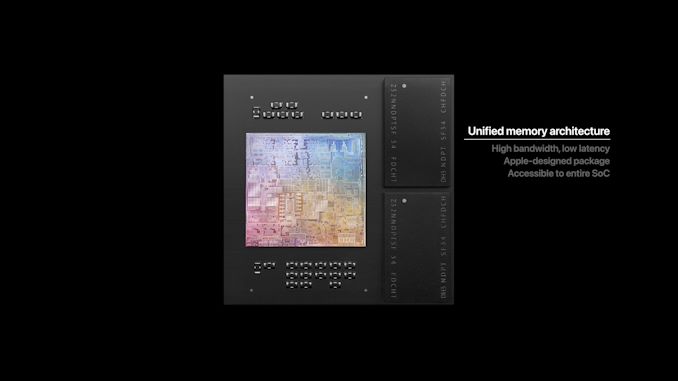
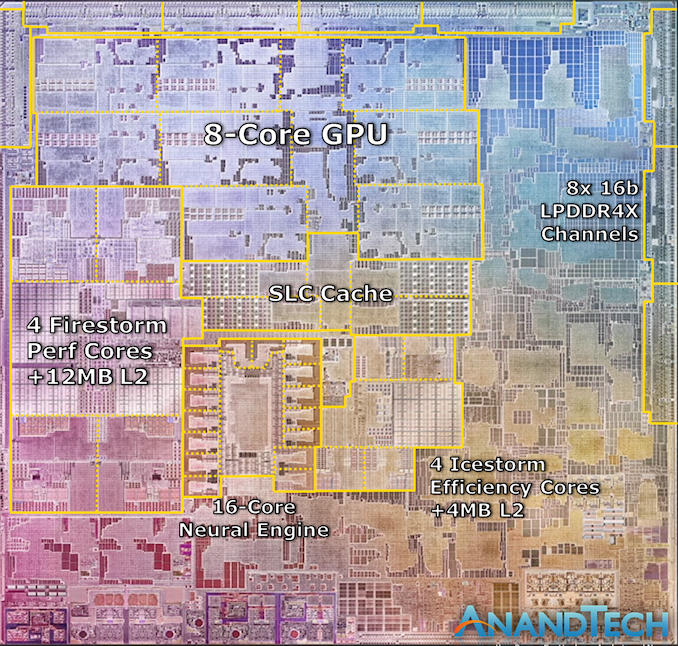
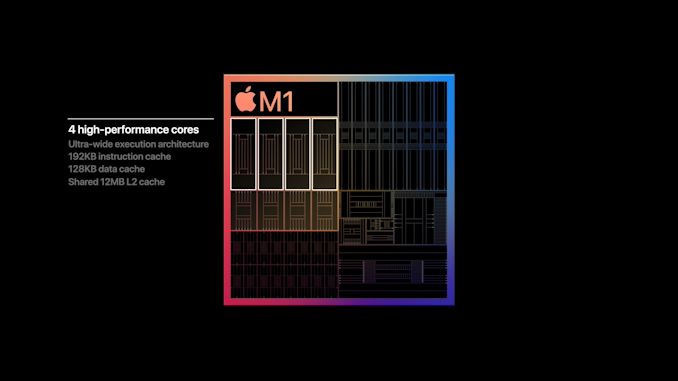

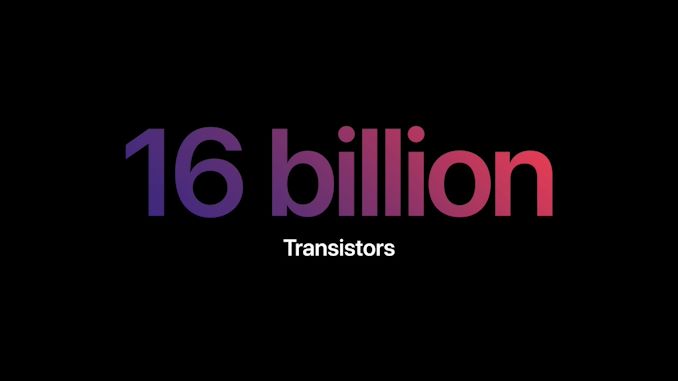
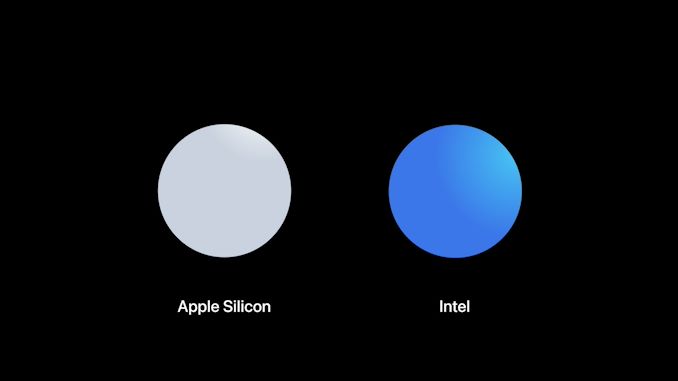








644 Comments
View All Comments
GeoffreyA - Saturday, December 12, 2020 - link
I tend to agree. You know, these technology companies of today are wielding great power in this world, yet it's not very visible perhaps. They control with a smile on their face. Chains work best when people don't know they're shackled.alpha754293 - Thursday, November 12, 2020 - link
With x86/x64 MacBooks, I can do more than just whatever Apple offers.Now, it's back to not really being able to do much with Macs again.
(It took probably close to a decade before technical computing apps were ported to MacOS on x86/x64. And now with this switch to ARM, guess that I won't be doing THAT anymore on any of the new Macs (since the apps, once again, aren't available, and hopefully, it won't take ANOTHER 10 years before the companies that make those programs, port them over. But then again, at least with x86/x64, they already had it for other OS platforms. This -- I'm not sure what any of the existing software vendors are going to do with this.)
samcolam - Friday, November 13, 2020 - link
Such an interesting thread.Tomatotech - Friday, November 13, 2020 - link
Lovely article. I read every word. Looking forward to actual reviews of the M1 soon.I think Apple has played a blinder here. Scores of millions of people have built up years of experience of using the iOS ecosystem to fill their wants. They are people who don’t mind paying extra for an iDevice. Now Apple is presenting them with the chance to transfer that experience to a laptop or desktop where they can run all their iOS apps (plus macOS apps.)
Now they don’t need to learn both iOS AND Windows or both iOS AND macOS. At work I see many people struggling with desktop OSes.
Apple has just said bye to all that. I’m old school IT, I can run 3 OSes on the same laptop without breaking a sweat, but that isn’t what the masses want, and it doesn’t help non-IT people achieve what they want. iOS & Android have done all that and more.
Google are trying with their Android-based chromebooks but it seems stuck at the low end for mass adoption. If Apple can deliver on this and it looks like they are doing so, their sales will soar.
MrCrispy - Friday, November 13, 2020 - link
You're talking about people with disposable income who want and can afford Apple's premium $$$ devices. Its not 'the masses', far from it. 'people who don’t mind paying extra for an iDevice' are first world rich people.There's nothing special about iOS or MacOS. They are sold based on hype and because its tied to the hardware.
btw Windows runs the same OS on everything from a wearable to a server and they did it years before anyone else. But Microsoft isn't 'cool' so no one talks about it.
Joe Guide - Friday, November 13, 2020 - link
There may be some truth to your comment. Apple's products can be more expensive, but if you match for performance to price, such as Dell's comparable computers, the difference becomes less.But now the game is flipped upside down. The new M1 chips seem unbeatable based on performance, efficiency and price. The base, cheapo, affordable MBA is proving to be world class.
Geekbench seems to suggest top single thread performance, and now actual performance on Affinity Photo suggests it's not hype.
https://twitter.com/andysomerfield/status/13268661...
Your point about iOS or MacOS being no better than Windows may be right. But you can't put Windows these new machines yet.
Silver5urfer - Friday, November 13, 2020 - link
Lol, unbeatable, please go to Apple.com and then click on Mac and see what Macbooks are priced higher, you know why Apple prices their devices higher or any company for that matter ?Performance / Features.
These new M1 Macs are not unbeatable dude, Macbooks running Intel are unbeatable because they compare with each other and not with Windows machines. Nothing is world class about this for many reasons
- Software is beta phase, there's no Adobe software ready as Apple M1 is just shipping to consumers but Adobe needs time to optimize, Office is announced but it runs slow due to Rosetta2, 32Bit x86 is dead with past Mac OS release, that puts many users who want a desktop OS, then ARM translation means this machine is not going to have a VM, it discarded Bootcamp. Then the OS ecosystem, Mac OS software is not equal to iOS, running iOS apps on mac is nothing ground breaking, iOS has gated filesystem vs Mac nope it is open, still leagues behind Windows and Linux, many normies are not going to mess with the Gateway to change the applicaiton installtion etc.
- Hardware, the Machine is costing over $1K+ and the RAM is 8GB, epic joke. And for SSD upgrade from 256 which is a joke at this price, is 200 bucks, and on top all is soldered. No one replace anything. Gaming performance is unknown at this point and Mac apps like SOTTR, BioShock needs to be updated for M1, then on top the Min spec for them is requiring a Dedicated GPU, so far AMD is not there, they are moving closer to their own ecosystem, there these games are not going to work. Geekbench is a shit benchmark, just hit GB4 scores on iPhones vs Android and then GB5 on the same and notice the difference with the SoCs on Apple vs Android, it's a worthless trash benchmark. The only viable is Cinebench R23 from Maxon. There ST is high but when we add SMT or here the BigLittle we do not know how perf scales, throttlng etc, since Mac Mini has fans while MBA the world class laptop doesn't, expect performance loss, no one can cheat physics. DIY repair is anyways dead on Macs since they removed the SSD and RAM, but with these and the Touchbar macs the KB is also sealed shut so is Battery heavily glued on.
Joe Guide - Friday, November 13, 2020 - link
You should read Paul Spector's assessment about where things stand. I think it is a fair analysis.https://componentplanet.wordpress.com/2020/11/13/b...
"By the same token, however, Apple’s marketing overreach on that stupid claim shouldn’t lull anyone into ignoring this chip. It represents the most potent threat to x86 dominance that I’ve seen in my entire career."
name99 - Friday, November 13, 2020 - link
Seriously?If an author can't tell the difference between 8 CPUs(+SMT) and 4 CPUs (+4 small) then he doesn't deserve my time.
NetMage - Saturday, November 14, 2020 - link
And if you can't tell the difference between Apple's low end passively cooled introductory chip, and what the future will bring, I think we know who's not worth any time.